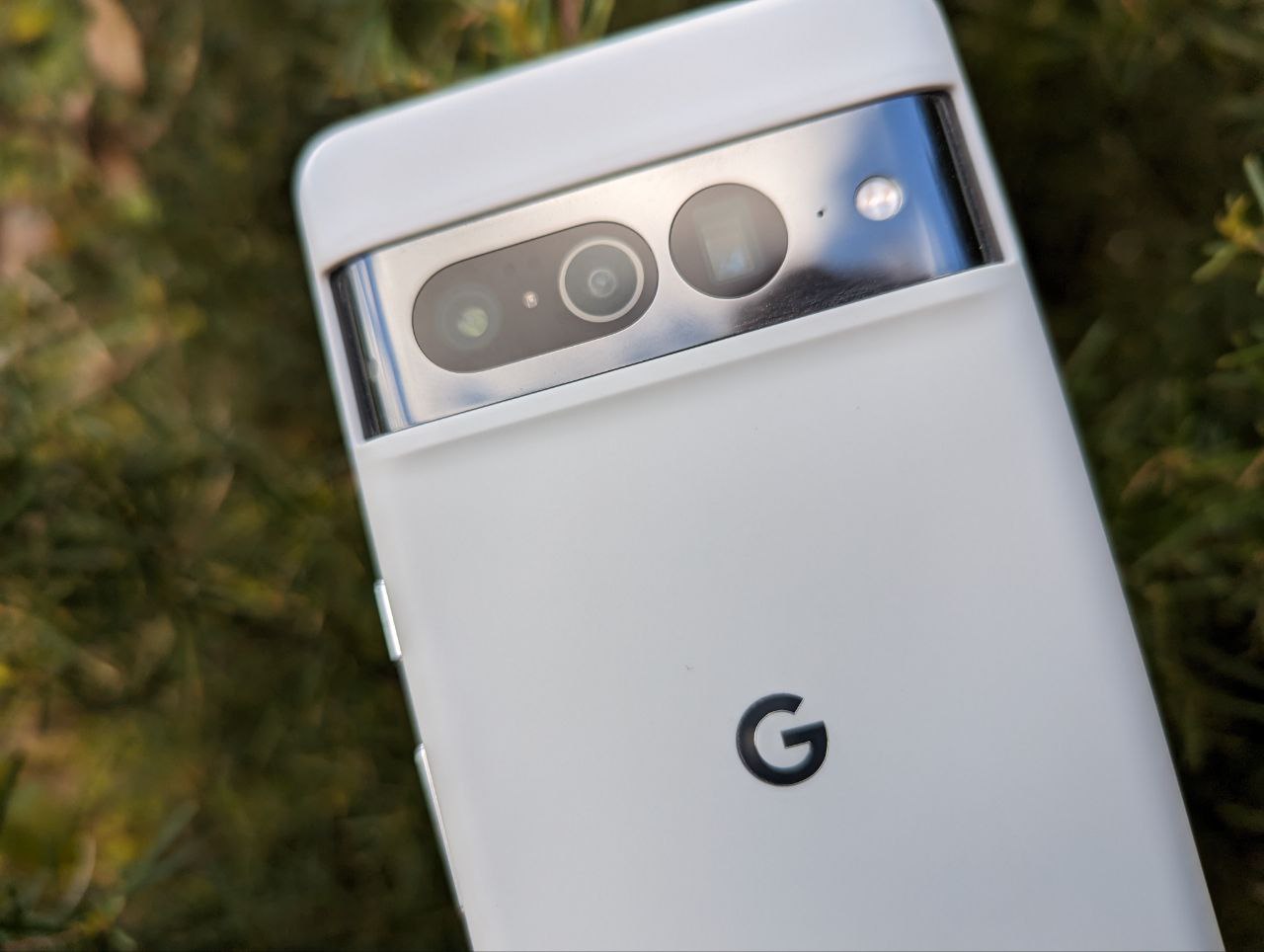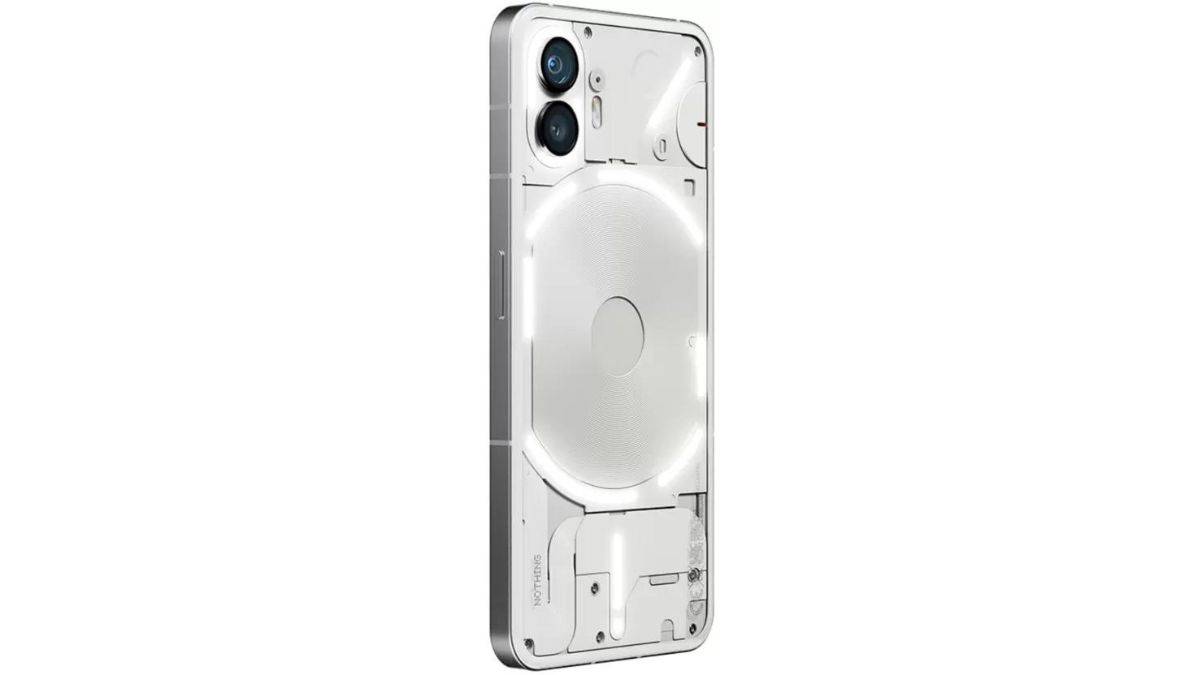Even before the official launch of the device, we had seen almost everything we need to know about the Pixel 7 Pro. This is the norm these days as leaks become more common, so it’s hardly a surprise. What did come as a surprise were some of the feature updates that Google prepared for the Pixel 7 Pro (and Pixel 7) to improve the user experience.
It’s the biggest and baddest model Google has to offer for 2022, and yet it maintains a pretty affordable price tag of $1,299.00; so is it worth the upgrade?
What’s in the box?
The short answer is, not much!
The box itself is pretty small when you consider the physical device it’s in, so that’s an indicator that you’re not in for something that’s going to rock your world. Inside the box you will find the phone, cable, USB-C to USB-A converter, SIM pin and some instructions. Google seems to have reached the point of thinking that instructions are not read, so why bother…
Most of the big tech companies now don’t include charging bricks, and Google is one of them. There are several fairly reasonable justifications for this, including the fact that most people would have a sufficient arsenal to charge and the fact that charge power has changed over time. If you want fast charging, then the extra $45.00 for a charging brick from the Google Store or one of the other charging options on the market is probably a good investment.
Design and build
We covered the basics of the hardware changes when we took a first look at the Pixel 7 Pro. For anyone who hasn’t had a chance to read the specs yet, here they are:
- 6.7-inch QHD that performs up to 120Hz dynamic refresh and 1500 nits peak
- Tensor G2 processor – To put it on par with others, performance is roughly in line with the Snapdragon 865
- 12GB of memory and options (128/256/512GB) for storage
- 5000mAh battery with 30W fast charging capabilities and wireless charging
- Unlock with fingerprint, face, pattern or PIN
- 5G mmWave, Bluetooth 5.2, Wi-Fi 6e, NFC and more
- Five years of security and three updated operating systems
- 50MP wide camera, 12MP ultrawide camera, 48MP telephoto camera
- 10.8MP selfie camera
- Two SIM cards: Nano + eSIM
The feel of the device is slightly polished from last year’s Pixel 6 Pro, and I mean that in a few ways. The physical edges of the device feel a little more rounded and natural compared to the 6, and the surfaces — made of Corning Gorilla Glass Victus — on the device are extremely smooth; which makes me worry about dropping the phone.

There are plenty of good cases out there to protect your phone, but it’s worth knowing that some of them are also quite smooth to the touch.
The transition, at least for the flagships, seems to be complete now and you are expected to get a fingerprint sensor under the screen. That’s exactly what Google has provided here, and while it’s better than the Pixel 6 Pro’s sensor in the early stages, it’s still not particularly fast or 100% reliable; this is good because i find face unlock very reliable.
Battery life is a big contributor to a great experience
Something that seems to have escaped the attention of a number of people I’ve spoken to is that the battery on a Pixel device seems to improve over time. The software learns your habits, when you’re likely to use the device and certain apps heavily, and which apps you use briefly and then switch off.
So in the early stages I felt it was going pretty well, but after a few weeks; I’m really happy with what I’m getting out of the 5000mAh battery in the Pixel 7 Pro.
This great battery experience is despite the frankly ridiculous number of apps I run, the regular periods of time I run streaming (be it music or video), messaging, and even apps I run battery exceptions for due to the need to instantly notifications when available. NB. Adaptive battery settings are on by default.
For me, the day starts around 6am when my phone is running low. Throughout the day it’s not unusual for me to get 6.5 hours or more of screen time during the day and still get to the end of the day with somewhere between 15% and 30% left when I turn on at 11pm The difference largely depends from whether my streaming was just video or music.
Even on extreme usage days — constant phone calls, 8+ hours of screen-on time, and heavy use throughout the day — I only needed 15 minutes of recharging to last the rest of the day. This is even true after I switched the screen resolution from the default 1080p to 1440, there was no noticeable difference as mentioned in the first post about looking at the device.
To really get into it, I wish loading was faster. But I also understand that to achieve this — SUPERVOOC speed — there will likely be costs involved that will increase the price of Pixel devices.
Performance, software and AI: Pixel devices lead the way
There’s so much going on with Pixel devices these days. Probably the most important thing to note in the early stages is that this is Android the way Google presents it. It’s clean and pure, with zero software; only the apps you actually want on your device.

This integration between productivity hardware, Google software, and AI is now complete. So much so that if you’re buying a Pixel device, you’re probably considering some of the AI features as a key point in your purchasing decision. With Tensor 2, so much is done on the device without needing to connect to online services to get the job done.
There are actually too many features in terms of software to go through in a device review. There are a few points I’d like to make before we move on to the camera.
The use of voice input is not only better than previous generations, but also a significant step forward. Voice recognition is very accurate, even in my car with background road noise. What impressed me most in this area was the accuracy of the capture, including punctuation such as question marks, usually accurate.
The other is related to personal needs and my paid work in the disability sector. The ability to transcribe live videos, text-to-speech for visually impaired users, links to hearing aids and a directional selfie frame: All these combine to make the Android platform more accessible to users with various disabilities. It’s great to see it happen, but it should have happened years ago; although the technology may not have been as good as the current supply.
The camera: Google has just shown the way forward to its competitors
Just putting up a gallery of images doesn’t show you how good the Pixel 7 Pro’s camera is. Although time was somewhat limited to really test the camera, there were good opportunities and I saw some amazing results.

So to set the scene, there are plenty of modes available on the Pixel 7 Pro, which include:
- Night scope
- Motion: long exposure or action panorama
- Portrait
- Camera (think of it as a point-and-shoot mode)
- Video or cinema
- Panorama
- Photo Sphere
- Google Lens
It’s still not perfect, but the shutter speed is much better than previous devices in Google’s lineup. I’ve found several times that the instant preview isn’t exactly what the final image delivers. It’s come a long way from some of the results I got last year with the Pixel 6 Pro and more recently with the Pixel 6a; especially trying to catch a fast moving target like a kid.

The Pixel 7 Pro camera experience is excellent, with exceptional quality images. Color reproduction, image sharpness, and some of the — you can see this happening if you’re quick — post-processing really improves the final product against oversaturated colors and making them look unnatural.
There are some other really cool features that are — at this point — available on the Pixel 7 Pro, like Photo Unblur. As you can see below, this can be completed with old photos like this photo of a track from 2006 taken with a Canon digital camera; so as you can see he is capable of some serious magic!
Are there any problems?
To be honest, it’s really a wonder to find many errors in the phone. I had a few odd issues early in testing that were reported to Google and seem to have been fixed now. When you consider the $1299.00 price tag, this is probably one of the best phones on the market right now; but it is not perfect and the main issues of concern have already been mentioned.
Although the material is common for other high-end devices, the Pixel 7 Pro is quite smooth to the touch. So it’s absolutely on the recommended list for putting a case on the phone, but Google’s cases are also pretty smooth to the touch.


The other thing I’d really like to see is faster charging, not necessarily to the point of going from 0 – 100% in 20 minutes, but given that there are significantly faster charging options on the market, this feels just a touch behind market expectations.
Final Thoughts: The Pixel 7 Pro is the complete package
I’m really impressed with the Pixel 7 Pro. It delivered everywhere I expected and with the AI improvements it went a lot further. Battery life is excellent and will last heavy users through a full day of use. This is complemented by overall performance that meets and probably exceeds what almost any user can reasonably expect from their device.

The camera offers multiple options for capturing images with excellent quality. The light and color capture is very natural and accurate, with only rare occasions where the lighting can produce a less than satisfactory result.
The slight $300.00 price increase over the Pixel 7 is totally justified, and if you want a phone that’s worth the money, this is it. I’d be more than happy to recommend the Pixel 7 Pro to any user looking for a larger device with a stunning screen, great performance, really excellent camera and really good battery life.
You can get one online at Google Storeor through the usual — online or physical — retail channels.
Disclosure Statement
Google has not requested a return of the hardware
https://ausdroid.net/2022/10/28/pixel-7-pro-review-the-latest-and-greatest-so-far-from-google/


